Mesh Traversal
A better understanding of how to navigate the mesh topology.
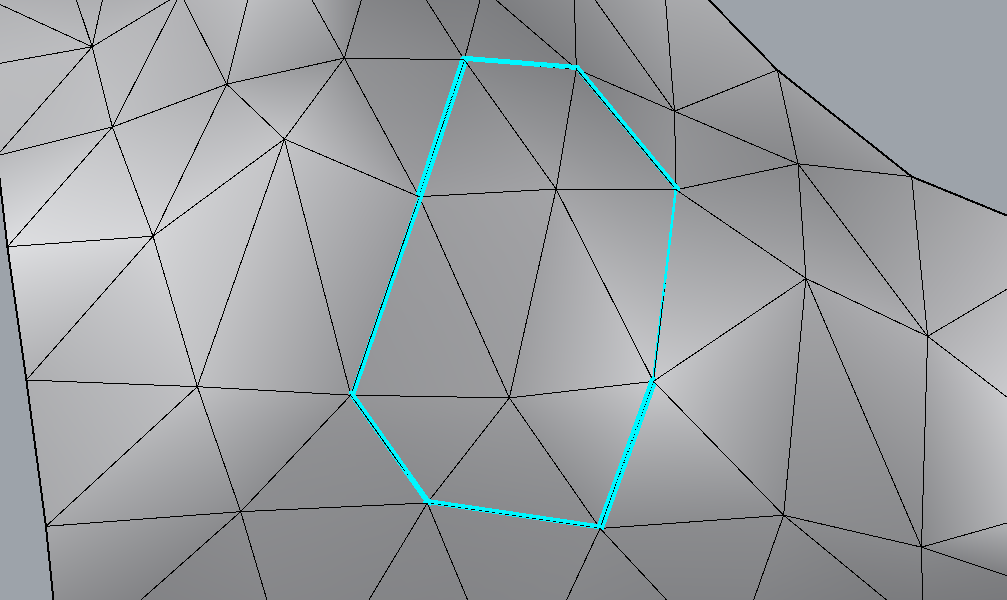
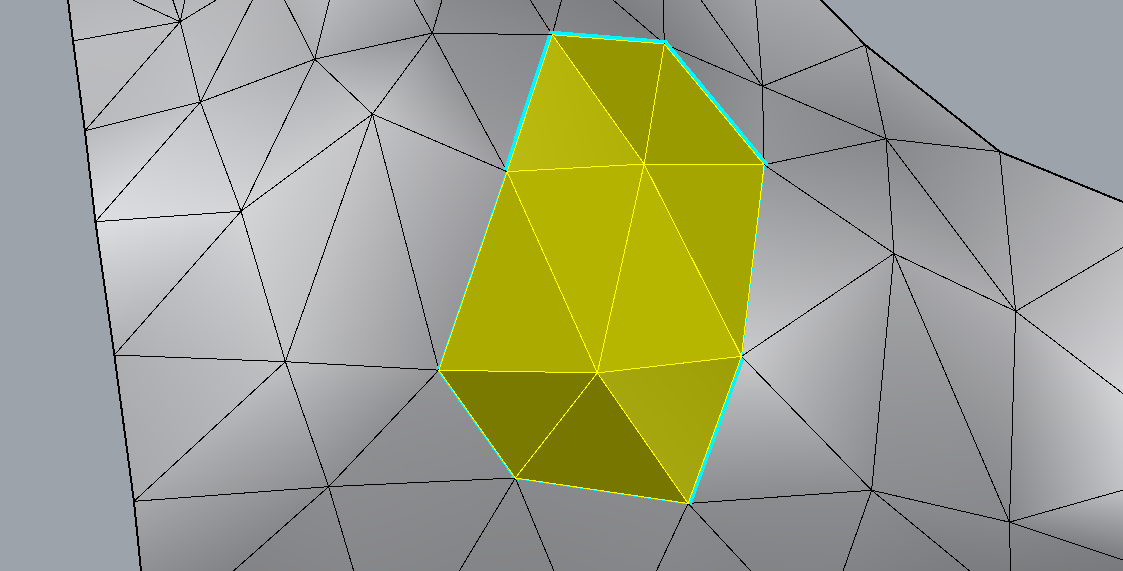
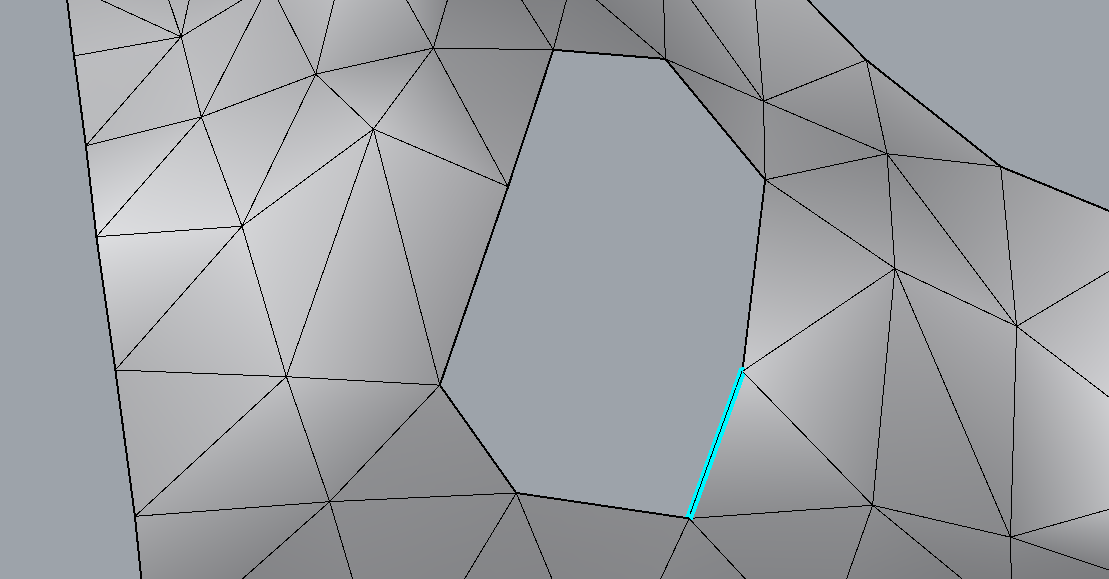
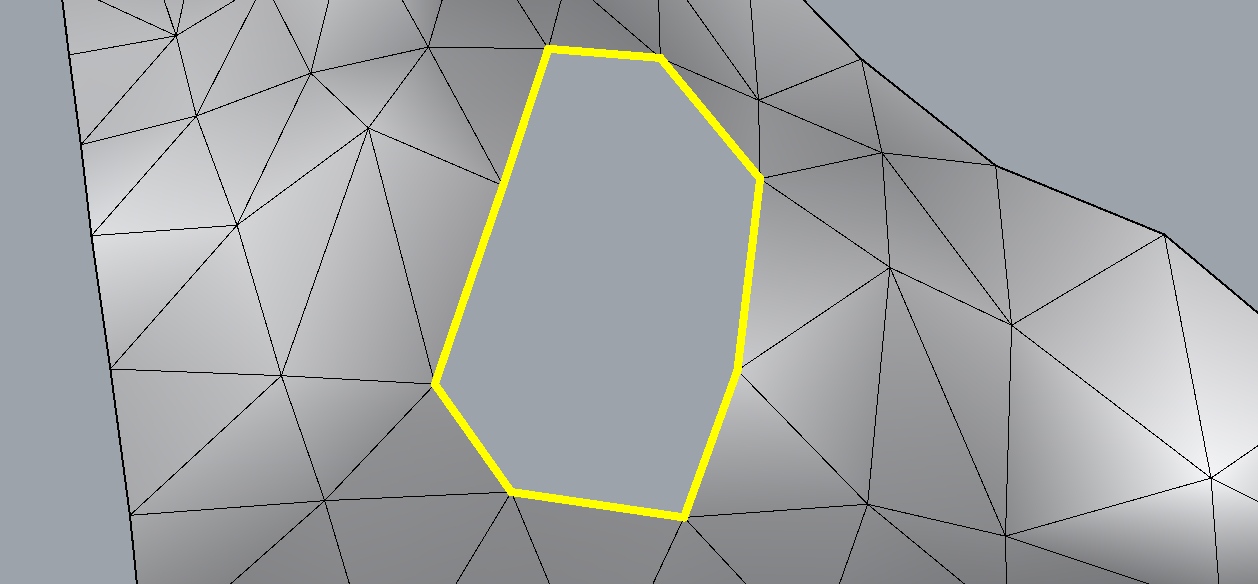
Intro
1.MeshTriPoint contains EdgeId e
FaceId intersectionFace = mesh.topology.left( meshTriPoint.e ); // on this face ray intersects mesh
std::optional<MeshEdgePoint> interEdge = meshTriPoint.onEdge( mesh.topology ); // if ray intersects mesh exactly on edge optional is not null
VertId interVert = meshTriPoint.inVertex( mesh.topology ); // if ray intersects mesh exactly in vertex VertId is valid()
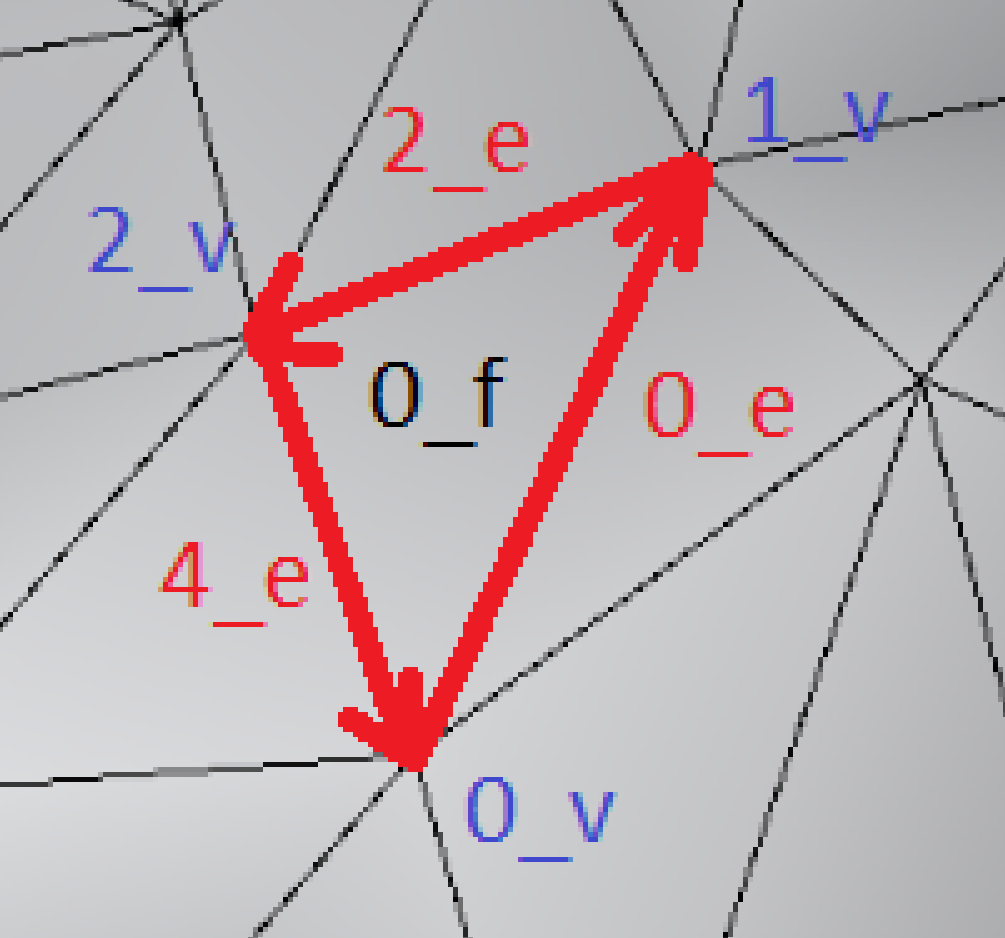
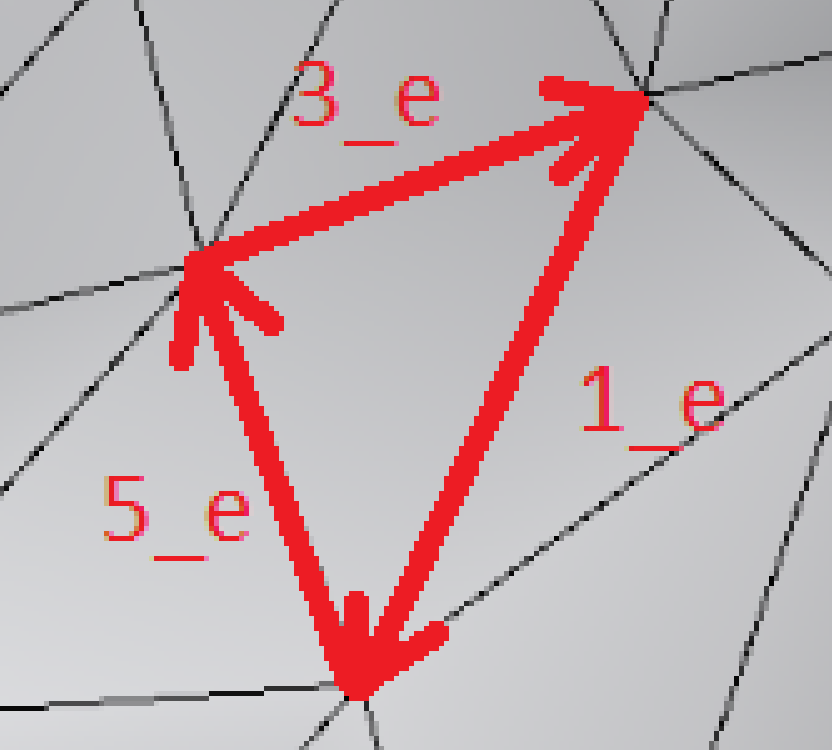
Basic navigation:
// left face
assert( mesh.topology.left( 0_e ) == 0_f );
assert( mesh.topology.left( 2_e ) == 0_f );
assert( mesh.topology.left( 4_e ) == 0_f );
// change edge direction
assert( 0_e.sym() == 1_e && 1_e.sym() == 0_e );
assert( 2_e.sym() == 3_e && 3_e.sym() == 2_e );
assert( 4_e.sym() == 5_e && 5_e.sym() == 4_e );
// vertices
assert( mesh.topology.org( 0_e ) == 0_v );
assert( mesh.topology.org( 5_e ) == 0_v );
assert( mesh.topology.dest( 4_e ) == 0_v );
assert( mesh.topology.dest( 1_e ) == 0_v );
assert( mesh.topology.org( 2_e ) == 1_v );
assert( mesh.topology.org( 1_e ) == 1_v );
assert( mesh.topology.dest( 0_e ) == 1_v );
assert( mesh.topology.dest( 3_e ) == 1_v );
assert( mesh.topology.org( 4_e ) == 2_v );
assert( mesh.topology.org( 3_e ) == 2_v );
assert( mesh.topology.dest( 2_e ) == 2_v );
assert( mesh.topology.dest( 5_e ) == 2_v );
// edge rings
assert( mesh.topology.next( 0_e ) == 5_e );
assert( mesh.topology.next( 2_e ) == 1_e );
assert( mesh.topology.next( 4_e ) == 3_e );
assert( mesh.topology.prev( 1_e ) == 2_e );
assert( mesh.topology.prev( 3_e ) == 4_e );
assert( mesh.topology.prev( 5_e ) == 0_e );
Loops:
// to iterate over all edges with same origin vertex as firstEdge (INCLUDING firstEdge)
// for ( Edge e : orgRing( topology, firstEdge ) ) ...
inline IteratorRange<OrgRingIterator> orgRing( const MeshTopology & topology, EdgeId edge )
{ return { OrgRingIterator( topology, edge, edge.valid() ), OrgRingIterator( topology, edge, false ) }; }
inline IteratorRange<OrgRingIterator> orgRing( const MeshTopology & topology, VertId v )
{ return orgRing( topology, topology.edgeWithOrg( v ) ); }
// to iterate over all edges with same origin vertex as firstEdge (EXCLUDING firstEdge)
// for ( Edge e : orgRing0( topology, firstEdge ) ) ...
inline IteratorRange<OrgRingIterator> orgRing0( const MeshTopology & topology, EdgeId edge )
{ return { ++OrgRingIterator( topology, edge, true ), OrgRingIterator( topology, edge, false ) }; }
// to iterate over all edges with same left face as firstEdge (INCLUDING firstEdge)
// for ( Edge e : leftRing( topology, firstEdge ) ) ...
inline IteratorRange<LeftRingIterator> leftRing( const MeshTopology & topology, EdgeId edge )
{ return { LeftRingIterator( topology, edge, edge.valid() ), LeftRingIterator( topology, edge, false ) }; }
inline IteratorRange<LeftRingIterator> leftRing( const MeshTopology & topology, FaceId f )
{ return leftRing( topology, topology.edgeWithLeft( f ) ); }
// to iterate over all edges with same left face as firstEdge (EXCLUDING firstEdge)
// for ( Edge e : leftRing0( topology, firstEdge ) ) ...
inline IteratorRange<LeftRingIterator> leftRing0( const MeshTopology & topology, EdgeId edge )
{ return { ++LeftRingIterator( topology, edge, true ), LeftRingIterator( topology, edge, false ) }; }
2.If cyan loop has yellow region to the left you can use:
// fill region located to the left from given edges
MRMESH_API FaceBitSet fillContourLeft( const MeshTopology & topology, const EdgePath & contour );
MRMESH_API FaceBitSet fillContourLeft( const MeshTopology & topology, const std::vector<EdgePath> & contours );
otherwise you need to reverse loop first
/// reverses the order of edges and flips each edge orientation, thus
/// making the opposite directed edge path
MRMESH_API void reverse( EdgePath & path );
/// reverse every path in the vector
MRMESH_API void reverse( std::vector<EdgePath> & paths );
if your mesh has tonnel:
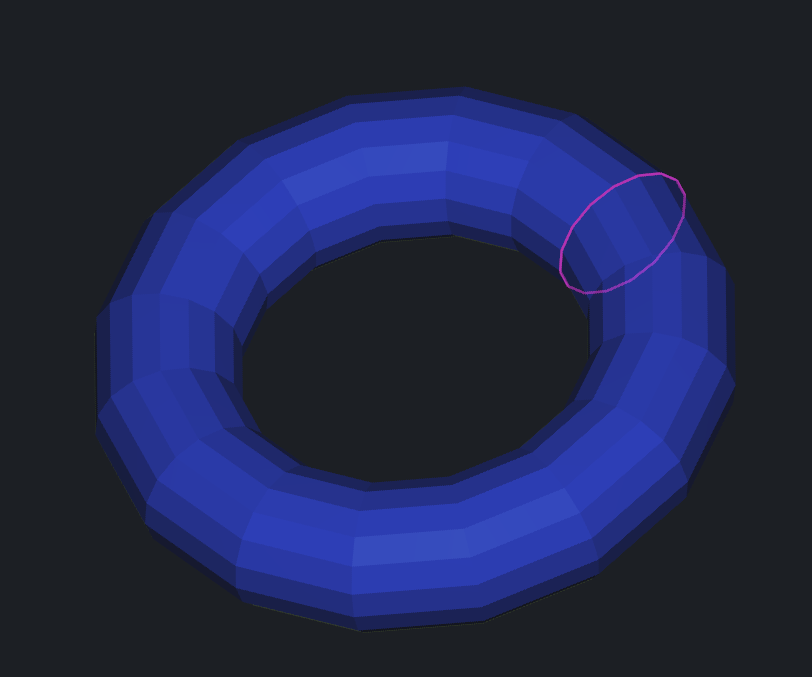
you can use
/**
* \brief Fills region located to the left from given contour, by minimizing the sum of metric over the boundary
* \ingroup MeshSegmentationGroup
*/
MRMESH_API FaceBitSet fillContourLeftByGraphCut( const MeshTopology & topology, const EdgePath & contour,
const EdgeMetric & metric );
/**
* \brief Fills region located to the left from given contours, by minimizing the sum of metric over the boundary
* \ingroup MeshSegmentationGroup
*/
MRMESH_API FaceBitSet fillContourLeftByGraphCut( const MeshTopology & topology, const std::vector<EdgePath> & contours,
const EdgeMetric & metric );
3.We have some functions for this:
// MeshTopology:
/// returns closed loop of boundary edges starting from given boundary edge,
/// which has region face to the right and does not have valid or in-region left face;
/// unlike MR::trackRegionBoundaryLoop this method returns loops in opposite orientation
[[deprecated( "use trackRightBoundaryLoop(...) instead" )]]
[[nodiscard]] MRMESH_API EdgeLoop trackBoundaryLoop( EdgeId e0, const FaceBitSet * region = nullptr ) const;
/// returns all boundary loops, where each edge has region face to the right and does not have valid or in-region left face;
/// unlike MR::findRegionBoundary this method returns loops in opposite orientation
[[deprecated( "use findRightBoundary(...) instead" )]]
[[nodiscard]] MRMESH_API std::vector<EdgeLoop> findBoundary( const FaceBitSet * region = nullptr ) const;
/// returns one edge with no valid left face for every boundary in the mesh
[[nodiscard]] MRMESH_API std::vector<EdgeId> findHoleRepresentiveEdges() const;
// MRRegionBoundary.h:
// returns closed loop of region boundary starting from given region boundary edge (region faces on the left, and not-region faces or holes on the right);
// if more than two boundary edges connect in one vertex, then the function makes the most abrupt turn to right
[[nodiscard]] MRMESH_API EdgeLoop trackLeftBoundaryLoop( const MeshTopology & topology, EdgeId e0, const FaceBitSet * region = nullptr );
[[nodiscard]] inline EdgeLoop trackLeftBoundaryLoop( const MeshTopology & topology, const FaceBitSet & region, EdgeId e0 )
{ return trackLeftBoundaryLoop( topology, e0, ®ion ); }
// returns closed loop of region boundary starting from given region boundary edge (region faces on the right, and not-region faces or holes on the left);
// if more than two boundary edges connect in one vertex, then the function makes the most abrupt turn to left
[[nodiscard]] MRMESH_API EdgeLoop trackRightBoundaryLoop( const MeshTopology & topology, EdgeId e0, const FaceBitSet * region = nullptr );
[[nodiscard]] inline EdgeLoop trackRightBoundaryLoop( const MeshTopology & topology, const FaceBitSet & region, EdgeId e0 )
{ return trackRightBoundaryLoop( topology, e0, ®ion ); }
// returns all region boundary loops;
// every loop has region faces on the left, and not-region faces or holes on the right
[[nodiscard]] MRMESH_API std::vector<EdgeLoop> findLeftBoundary( const MeshTopology & topology, const FaceBitSet * region = nullptr );
[[nodiscard]] inline std::vector<EdgeLoop> findLeftBoundary( const MeshTopology & topology, const FaceBitSet & region )
{ return findLeftBoundary( topology, ®ion ); }
// returns all region boundary loops;
// every loop has region faces on the right, and not-region faces or holes on the left
[[nodiscard]] MRMESH_API std::vector<EdgeLoop> findRightBoundary( const MeshTopology & topology, const FaceBitSet * region = nullptr );
[[nodiscard]] inline std::vector<EdgeLoop> findRightBoundary( const MeshTopology & topology, const FaceBitSet & region )
{ return findRightBoundary( topology, ®ion ); }
You can have a look at MRExpandShrink.h
// adds to the region all faces within given number of hops (stars) from the initial region boundary
MRMESH_API void expand( const MeshTopology & topology, FaceBitSet & region, int hops = 1 );
// returns the region of all faces within given number of hops (stars) from the initial face
[[nodiscard]] MRMESH_API FaceBitSet expand( const MeshTopology & topology, FaceId f, int hops );
// adds to the region all vertices within given number of hops (stars) from the initial region boundary
MRMESH_API void expand( const MeshTopology & topology, VertBitSet & region, int hops = 1 );
// returns the region of all vertices within given number of hops (stars) from the initial vertex
[[nodiscard]] MRMESH_API VertBitSet expand( const MeshTopology & topology, VertId v, int hops );
// removes from the region all faces within given number of hops (stars) from the initial region boundary
MRMESH_API void shrink( const MeshTopology & topology, FaceBitSet & region, int hops = 1 );
// removes from the region all vertices within given number of hops (stars) from the initial region boundary
MRMESH_API void shrink( const MeshTopology & topology, VertBitSet & region, int hops = 1 );
and MREdgePath.h
/// expands the region (of faces or vertices) on given metric value. returns false if callback also returns false
MRMESH_API bool dilateRegionByMetric( const MeshTopology& topology, const EdgeMetric& metric, FaceBitSet& region, float dilation, ProgressCallback callback = {} );
MRMESH_API bool dilateRegionByMetric( const MeshTopology& topology, const EdgeMetric& metric, VertBitSet& region, float dilation, ProgressCallback callback = {} );
MRMESH_API bool dilateRegionByMetric( const MeshTopology& topology, const EdgeMetric& metric, UndirectedEdgeBitSet& region, float dilation, ProgressCallback callback = {} );
/// shrinks the region (of faces or vertices) on given metric value. returns false if callback also returns false
MRMESH_API bool erodeRegionByMetric( const MeshTopology& topology, const EdgeMetric& metric, FaceBitSet& region, float dilation, ProgressCallback callback = {} );
MRMESH_API bool erodeRegionByMetric( const MeshTopology& topology, const EdgeMetric& metric, VertBitSet& region, float dilation, ProgressCallback callback = {} );
MRMESH_API bool erodeRegionByMetric( const MeshTopology& topology, const EdgeMetric& metric, UndirectedEdgeBitSet& region, float dilation, ProgressCallback callback = {} );
/// expands the region (of faces or vertices) on given value (in meters). returns false if callback also returns false
MRMESH_API bool dilateRegion( const Mesh& mesh, FaceBitSet& region, float dilation, ProgressCallback callback = {} );
MRMESH_API bool dilateRegion( const Mesh& mesh, VertBitSet& region, float dilation, ProgressCallback callback = {} );
MRMESH_API bool dilateRegion( const Mesh& mesh, UndirectedEdgeBitSet& region, float dilation, ProgressCallback callback = {} );
/// shrinks the region (of faces or vertices) on given value (in meters). returns false if callback also returns false
MRMESH_API bool erodeRegion( const Mesh& mesh, FaceBitSet& region, float dilation, ProgressCallback callback = {} );
MRMESH_API bool erodeRegion( const Mesh& mesh, VertBitSet& region, float dilation, ProgressCallback callback = {} );
MRMESH_API bool erodeRegion( const Mesh& mesh, UndirectedEdgeBitSet& region, float dilation, ProgressCallback callback = {} );
Example
Delete the faces between the contours.
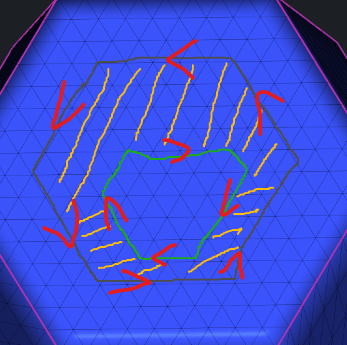
The area inside will be to left from both of them
asmesh/source/MRMesh/MRFillContour.h
Lines 8 to 10 in ae1704c
// fill region located to the left from given edges
MRMESH_API FaceBitSet fillContourLeft( const MeshTopology & topology, const EdgePath & contour );
MRMESH_API FaceBitSet fillContourLeft( const MeshTopology & topology, const std::vector<EdgePath> & contours );
mesh.topology.deleteFaces( fillContourLeft( mesh.topology, contours ) );
mesh.invalidateCaches(); // important to call after direct changing of `MeshTopology`